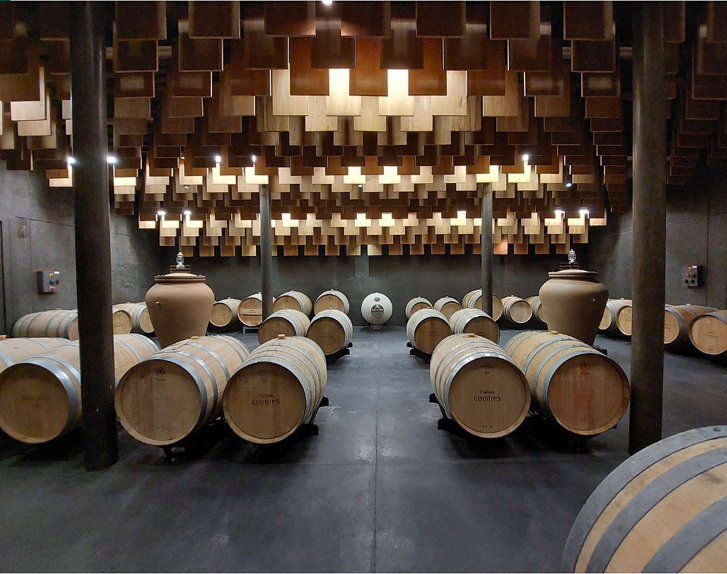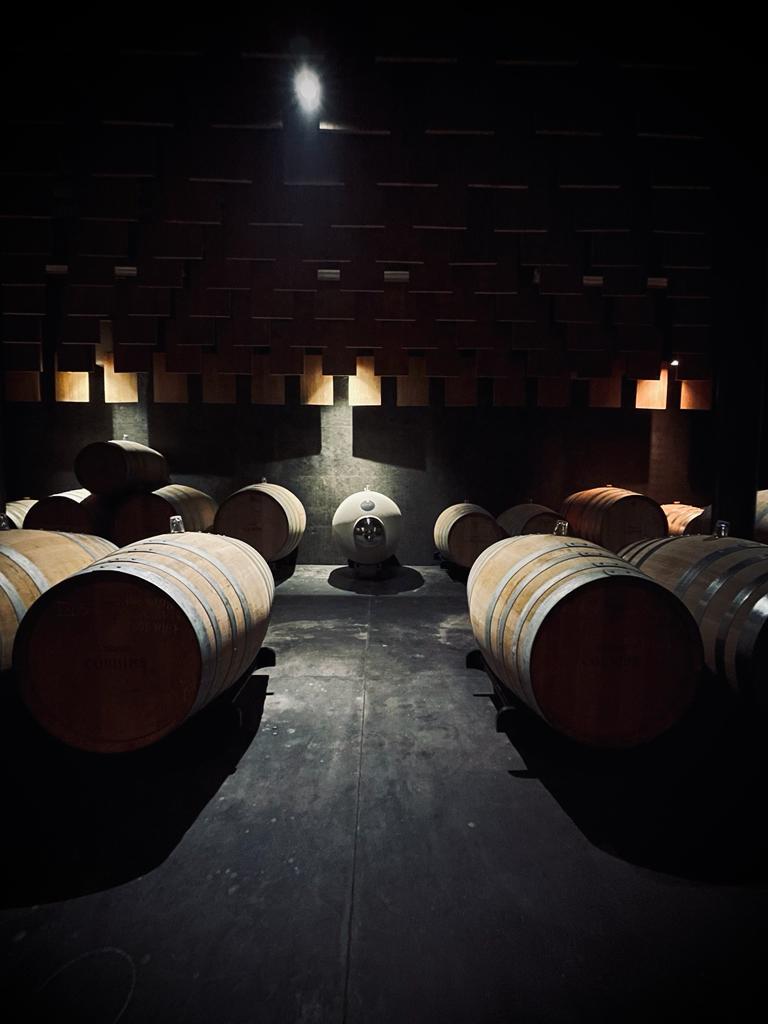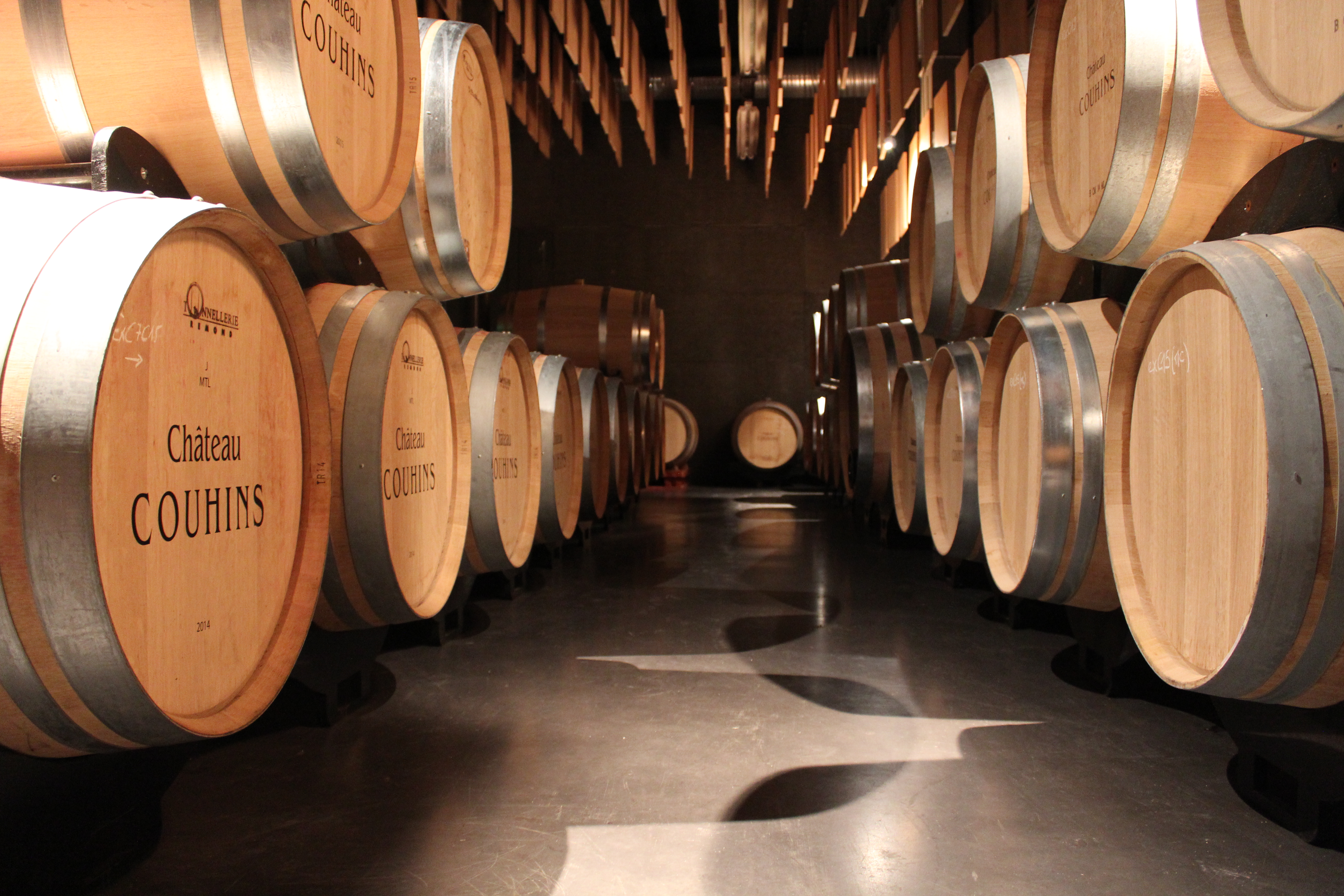In the cellar
Harvest season at Couhins is a very special period for us - a time that is both precious and managed with extreme precision.
We are always punctual when selecting the harvest date, relying on two key and complementary criteria: the tasting of the berries and the assessment of their maturity. With help from the vines’ vigour map and field observations, several passes through the vineyard are made for us to harvest only the ripest bunches of uniform quality. The grapes are harvested by hand in small, slatted crates of 10kg, to avoid cramming them. These crates are then transported to the vat house where they are further sorted by hand.

White wine
“During our first meeting in 1999, Denis Dubourdieu set me an ambitious goal in words I will never forget: ‘Couhins is one of those rare places where one can make white wines that stand the test of time’. Dominique Forget
As soon as it is harvested, the Sauvignon Blanc is left in a cold room overnight (between 6° and 8°C), before being pressed in whole bunches the next day. It then undergoes a slow and gentle extraction with a pneumatic press in inert nitrogen gas. This encourages a cold maceration that extracts the aroma precursors contained within the skins while protecting them from oxidation, an essential step to preserving their aromatic potential. After a light clarification, the musts begin alcoholic fermentation in 300- to 500-litre stainless steel vats, amphorae, or barrels. During this fermentation, the yeasts transform the precursors into actual aromas, revealing the singularity of Couhins’s terroir.
The white wines are stored in individual batches according to the plot where the corresponding grapes were grown, and matured for nine to ten months on their lees, which undergo a gentle bâtonnage. This encourages the yeast to break down, giving the wine more body as well as physical and phenolic stability. Thus, a wine with great ageing potential is born.
Red wine
After being sorted, the red grapes are processed by a gravity separator machine, which further sorts the berries according to their quality, thus allowing us to vinify them most suitably. They are gravity fed into stainless-steel tanks where they begin their first fermentation, with vessels of a range of sizes assigned based on the volume produced by each plot. Amongst other benefits, this allows a gentle extraction of the phenolic components present in the juices, such as anthocyanins and tannins. After maceration, the wine is transferred to vats and barrels for malolactic fermentation. Once both fermentations have occurred, the wine is matured for 12 months, with different batches aged in stainless steel vats, casks, amphorae, new or second-use barrels, respectively.
This process enables us to take a tailored approach to the maturation of each variety according to its intrinsic characteristics. Throughout this refining phase, and several times throughout the year, the barrels are regularly topped off with additional wine to compensate for the evaporated liquid, and are further racked to aerate and clarify the wine. This crucial step helps the wine evolve in the very best conditions.
At the end of the maturation process, the various batches are blended to create wines that will each carry their own unique flavour while revealing common qualities: the highest standard of production and the character of our terroir. These core values continue to guide us throughout the entire vinification process, from vine to cellar.



